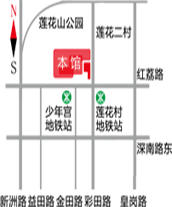
- The vitality on sketches
-
Ye Xin
Changjiang Senior Brother:
Reading your high-altitude sketches, I would like to summarize my feelings with one sentence from Diderot: "The vitality on sketches".
"Why do we prefer a good sketch over a finished oil painting? Because in a sketch, there is more life than form." Diderot's next exclamation was, "As the form deepens, the life on the sketch gradually disappears." (Salon of 1767)
The so-called "vitality on sketches", in my understanding, refers to the aesthetic of the dynamic motion in the process of line and stroke modeling. In 18th century Europe, as an element of "literary art," this aesthetic had already been written in the Encyclopedia. However, people's demand for easel painting was still to create illusions of volume, space, and texture on a flat surface. Therefore, although the formation of an oil painting was also a process of stroke shaping (as Shi Tao said, "Billions of strokes and ink all start with one painting and end with another" in "Bitter Melon Monk's Painting Quotes), the final requirement was to see things but not the pen, and the traces of strokes must be eliminated in the illusion of spatial depth. Its" vitality "can only remain in the sketch of paper based practice. In China, the aesthetic of brushstrokes was first seen in calligraphy in the Later Han Dynasty with the "brushstroke style" of cursive characters. During the Southern and Northern Dynasties, Xie He introduced painting techniques with the "vivid and bone like brushstrokes", thus establishing the concept of using the brush as the self, using the brush to write things, and using the brush to draw from life. A hundred years ago, the "art and science" of Europe dominated the Central Plains, teaching us how to use light and shadow, perspective, and anatomy to paint things up, and also bringing the painter's perspective back to the present world, facing the real life. At the same time, the "trompe l '? Il" (literally translated as "deceiving the eyes") of painting was replaced by photography, forcing Diderot's descendants to bring "sketches" onto the canvas, transforming them from concrete forms with lines and flat strokes to abstract expressions with symbol dots, pushing the concept of "vitality" in brushstrokes to the extreme. I crossed two lines from the past century and drew an "X". Do you think it looks like a pinhole imaging diagram? Is that intersection like a person's pupils or a camera lens?
Like everyone else, you have been a painter in this era of photography and images, teaching and creating visual painting at the crossroads of Chinese and Western ancient and modern times for 30 years. You have also had questions about whether it is Chinese, Western, ancient, and modern, as well as the trouble of blending formal language into my own. Unlike others, you are unwilling to follow the old path of "composition creation", nor do you believe in imaginative innovation. Only realistic and reliable sketching can captivate you. When you were a student, you were already a senior student in portrait sketching in the class. After graduating and staying on campus as a teacher, you even delved deeply into the line drawing of the human body in Greek bottles, and incorporated rigorous anatomy into the outline of "Gao Gu You Si". The attachment to seeing reality determines your reluctance to let go of light and shadow, but you should be more careful of the composition of white and black, and be careful of the momentum of brush strokes. With charcoal strips, you can use a brush to outline and wipe the changing thickness of the heartfelt feeling as much as possible; When using a brush, it does not adhere to traditional drawing methods and creates a tough charcoal strip. People in the printmaking department have to deal with printmaking. A gentleman does not use a knife, so you can use iron pencils and crayons to sketch on a copperplate, making people feel the bouncing of brush strokes and lines in the tone changes of the color blocks. Whether it's the naked human body in the classroom or the portraits dressed in snow, mountains, and grasslands, you teach students how to be loyal to their objects and more faithful to themselves, and write about people with people; How to capture the scene of breathing face to face with the object at this moment.
How can a painting be stopped as soon as it is good, retaining the true energy of improvisation during the process? Since ancient times, it has been a great concern for painters. Picasso said that a painting is finished, like the end of life. "Not being unable to suffer, but being unable to suffer," Zhang Yanyuan has long said, "Since you know it, why not? This is not impossible. If you do not know it, it is truly impossible. If you are lost in nature, then you will be get in the divine, if you will be lost in the divine, then you will be get in the masterly, if you will be lost in the masterly, then you will be get in the essence, and when you are sick, you will become meticulous." ("Records of Famous Paintings of All Dynasties: On Painting with a Bed for Writing") When painting a portrait, you start from your eyes. Your eyes are the starting point and coordinate of a portrait, and it is also the destination for you to give readers a leisurely and unrestrained look. As the saying goes, "The depiction of the divine is in the midst of New Language: Clever Art. With a brilliant expression, why is it difficult to be exquisite? Lowering the head and looking up, the three-dimensional presence in front of the eyes is moved into a two-dimensional picture, and through the brushstrokes, it gives people a "dynamic" association in the still picture, implying the fourth dimensional "vitality": time. If we consider the time limit constrained by on-site assignments as "natural", the benefits of sketching are also being vigilant against the pressure of time limits. We can only "see what we see, not what we don't see" ("Liezi Shuofu Jiufanggao"), and the scene naturally ends intentionally or unintentionally. The following ceremony is to ask for the signature of the portrait owner, and then jot down the date and location of the painting. In this way, with favorable timing, favorable location, and harmonious people, every portrait you sketch from life is a note taking manuscript of this human interaction, leaving behind a seamless and joyful experience, correcting mistakes that were not corrected in time, and the true energy of smoothness and non smoothness. I have noticed that by visiting major museums around the world, your interest in the sketches and sketches of classical masters far exceeds that of those grand masterpieces. After teaching abroad for twenty years, I have also seen that the reason why Chinese calligraphy and painting, which is improvised and directly written on the spot, is highly valued by the world is also due to the imprint of its individual life gene "la graphology".
Starting from the early 1990s, you began to use large-scale sketches and colorful ink sketches of the travel style on the Qinghai Tibet Plateau as your main formal language. When it comes to artwork and exhibitions, you changed the formula of "composition creation" to your own "composition creation". From then on, the concept of sketching combined with high-altitude behavior became uncontrollable. You persevered and went against the tide of ideological changes and the prevalence of concepts, embarking on a journey of reading and persistently returning to your spiritual home in your ideal country. The Qinghai Tibet Plateau has an altitude of 4000 meters and is said to be 40% oxygen deficient compared to sea level. You run there regularly, but it seems like you need to go for oxygen. If you don't go, your life is in danger. Admire the civilization on this land, admire the people who live here, and for 20 years, the journey to the plateau has become a ritual for you to persistently explore the source of the humanistic ecological river. Salute as one would, and you return to that land every year to worship and rest. I remember years ago, you also advised me: at least go and experience it firsthand. With a sincere expression, like an apostle urging goodness to rescue me from the pit of fire. I understand that drawing is not for fun, it's for real, it's about putting your life and fortune into it. So, when will you also draw yourself? You smiled without answering. If you ask again, you said you were looking for a mirror and complained, "I can't find the old mirror that doesn't deform like the U-shaped classroom of the Old School of Fine Arts anymore.". I suspect this is your Zen language trick. Have you already "seen" yourself in the eyes of sentient beings on those scenes where you can hear your heartbeat, and have you already transformed into the eyes of all sentient beings in the land of heavenly sounds?
Your plateau sketching has been going on for 20 years, far and near. I followed and watched for 20 years, seeing Beijing from Kyoto and Paris. In the bookshelf filled with friends' picture albums at home, there are several high-altitude sketching art collections that you have given me. By flipping through each book in chronological order, I can see the changes and constants within it. Both people from the plateau and those with deep depictions of their forms feel a fading vitality due to their increasingly clear and sincere brushstrokes. "Anger" in the sketch, Diderot used "la vie", and French also means "life" or "life". I ponder that you can grasp the true essence of sketching precisely because that is where your life lies.
Three thousand weak waters, you only take a spoonful to drink. I think this is your reason
Ye Xin salutes
Written on October 21, 2010 at the Grand Est é e Bookstore in Paris



